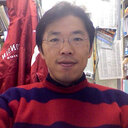Epidemiologic studies of stroke in Shibata, a Japanese provincial city: preliminary report on risk factors for cerebral infarction.
Հիմնաբառեր
Վերացական
A 6.5-year prospective study of cerebral infarction among residents 40 years and older was conducted at the Akadani-Ijimino district in Shibata City, Niigata Prefecture, Japan. The response rate for the initial examination was 85% of 1,182 males and 93% of 1,469 females. Nine hundred and sixty males and 1,339 females who were initially free of stroke were followed up from July 1977 through December 1983. Statistically significant risk factors for cerebral infarction appeared to be age, elevated blood pressure, high R, ST-T changes and atrial fibrillation on ECG, and albuminuria. The ECG abnormalities and albuminuria were due to the high blood pressure persisted over a long period of time. The strength of association of blood pressure with cerebral infarction got weak in comparison with other factors, and funduscopic changes which had been regarded as a risk factor for stroke in 1965-1974 did not reach statistical significance because of the spread of the community-based hypertension control. Even in 1977-1983 when Japanese dietary habits were westernized, neither hyperlipidemia nor obesity appeared to be related to the development of cerebral infarction.



